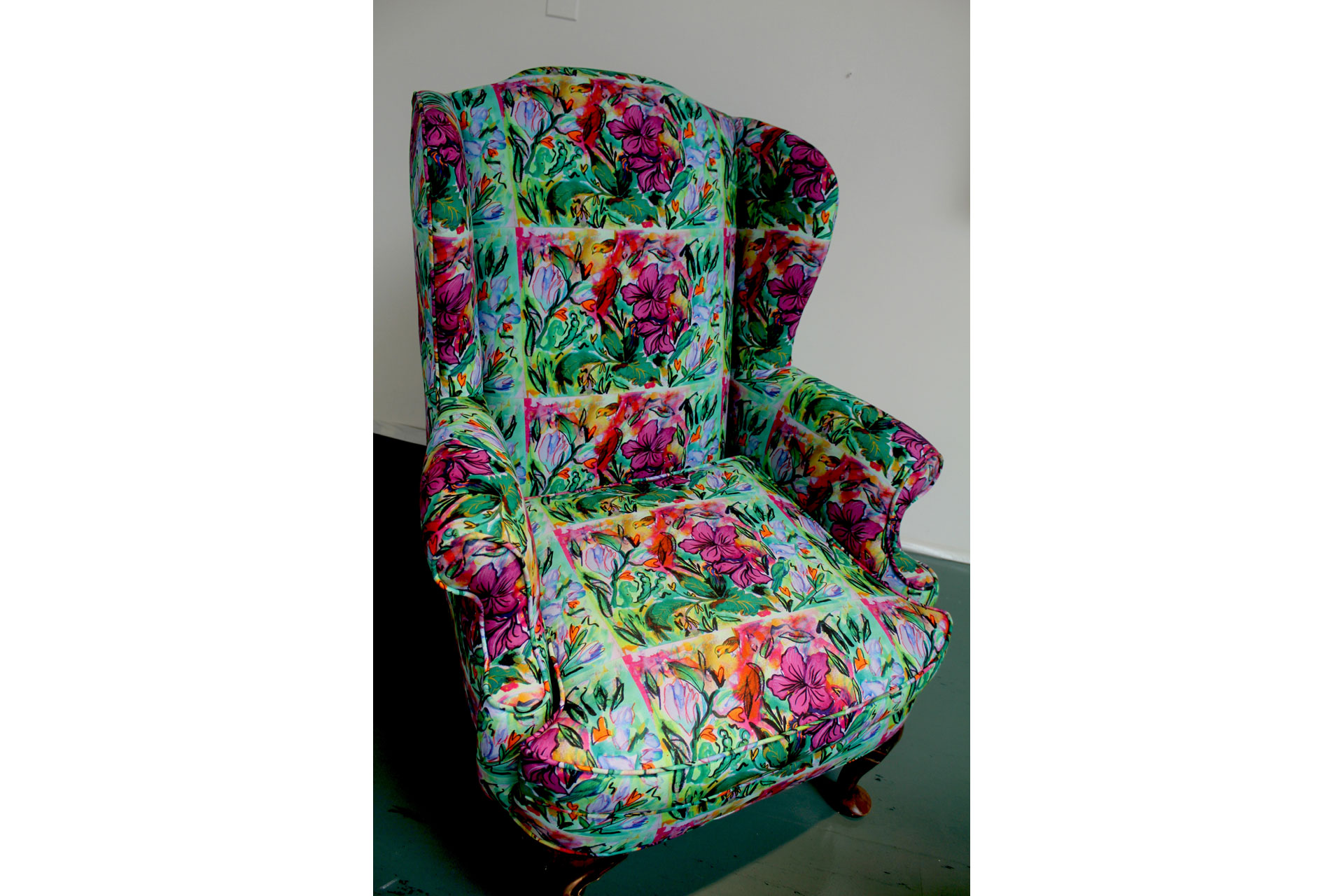Other Feminist Histories (La Sala de Nati)
installation
2015

Other Feminist Histories (La Sala de Nati) is an installation of lightbox paintings, sculpture, and an artist book that pays homage to three under-recognized women who played prominent roles in the social and cultural revolutions of Latin America of the 1960s and early 1970s. The project’s namesake, Natalia Revuelta, aka Nati, was a Cuban socialite born into an elite family who materially supported Fidel Castro’s insurgent movement to overthrow Fulgencio Batista. Tanya Bunke-Bider, aka Tania La Guerillera, was an Argentine-born, East German woman who served in the Cuban revolution and later movements throughout Latin America. Violeta Parra was a Chilean folklorist and songwriter whose music was the soundtrack for the student movements in Chile and Argentina.
La Sala de Nati complicates our understanding of events such as the Cuban Revolution through the recreation of Natalia Revuelta's living room, where key battles and events of the Cuban Revolution were planned. Revuleta's gesture, which literally recast an everyday domestic space into a revolutionary headquarters, speaks directly to both the spatial and political limits women faced in patriarchal Latin America, and the often unexpected and ingenious ways these women found to transcend those limits. Her modified living room offers a contemplative, feminine/feminist space where participants can rest, plan or meditate on whatever they wish, be it the day's quotidian events or global revolution. Visitors are invited to view a suite of watercolor drawings dedicated to female artists, writers, and revolutionaries, this while sitting on an armchair that has been custom-upholstered with an original watercolor drawing of the Cattleya Trianae orchid (endemic to Colombia and a symbol of womanhood) digitally printed on fabric. Surrounding the armchair are three lightboxes featuring Revuelta, Bunke-Bider, and Parra.
installation
2015

Other Feminist Histories (La Sala de Nati) is an installation of lightbox paintings, sculpture, and an artist book that pays homage to three under-recognized women who played prominent roles in the social and cultural revolutions of Latin America of the 1960s and early 1970s. The project’s namesake, Natalia Revuelta, aka Nati, was a Cuban socialite born into an elite family who materially supported Fidel Castro’s insurgent movement to overthrow Fulgencio Batista. Tanya Bunke-Bider, aka Tania La Guerillera, was an Argentine-born, East German woman who served in the Cuban revolution and later movements throughout Latin America. Violeta Parra was a Chilean folklorist and songwriter whose music was the soundtrack for the student movements in Chile and Argentina.
La Sala de Nati complicates our understanding of events such as the Cuban Revolution through the recreation of Natalia Revuelta's living room, where key battles and events of the Cuban Revolution were planned. Revuleta's gesture, which literally recast an everyday domestic space into a revolutionary headquarters, speaks directly to both the spatial and political limits women faced in patriarchal Latin America, and the often unexpected and ingenious ways these women found to transcend those limits. Her modified living room offers a contemplative, feminine/feminist space where participants can rest, plan or meditate on whatever they wish, be it the day's quotidian events or global revolution. Visitors are invited to view a suite of watercolor drawings dedicated to female artists, writers, and revolutionaries, this while sitting on an armchair that has been custom-upholstered with an original watercolor drawing of the Cattleya Trianae orchid (endemic to Colombia and a symbol of womanhood) digitally printed on fabric. Surrounding the armchair are three lightboxes featuring Revuelta, Bunke-Bider, and Parra.

Tamara Bunke
http://wikipedia.org/wiki/Tamara_Bunke
http://wikipedia.org/wiki/Tamara_Bunke
“Tactically, she was initially invaluable to Guevara's guerrillas because she used radio equipment hidden in a compartment behind the wall in her apartment to not only send coded messages to Fidel Castro in Havana; but to Guevara's guerrillas in the field by posing as a radiohost giving encoded relationship advice to fictitious lovelorn couples.[1] This radio program was called "Advice to Women".[4]







